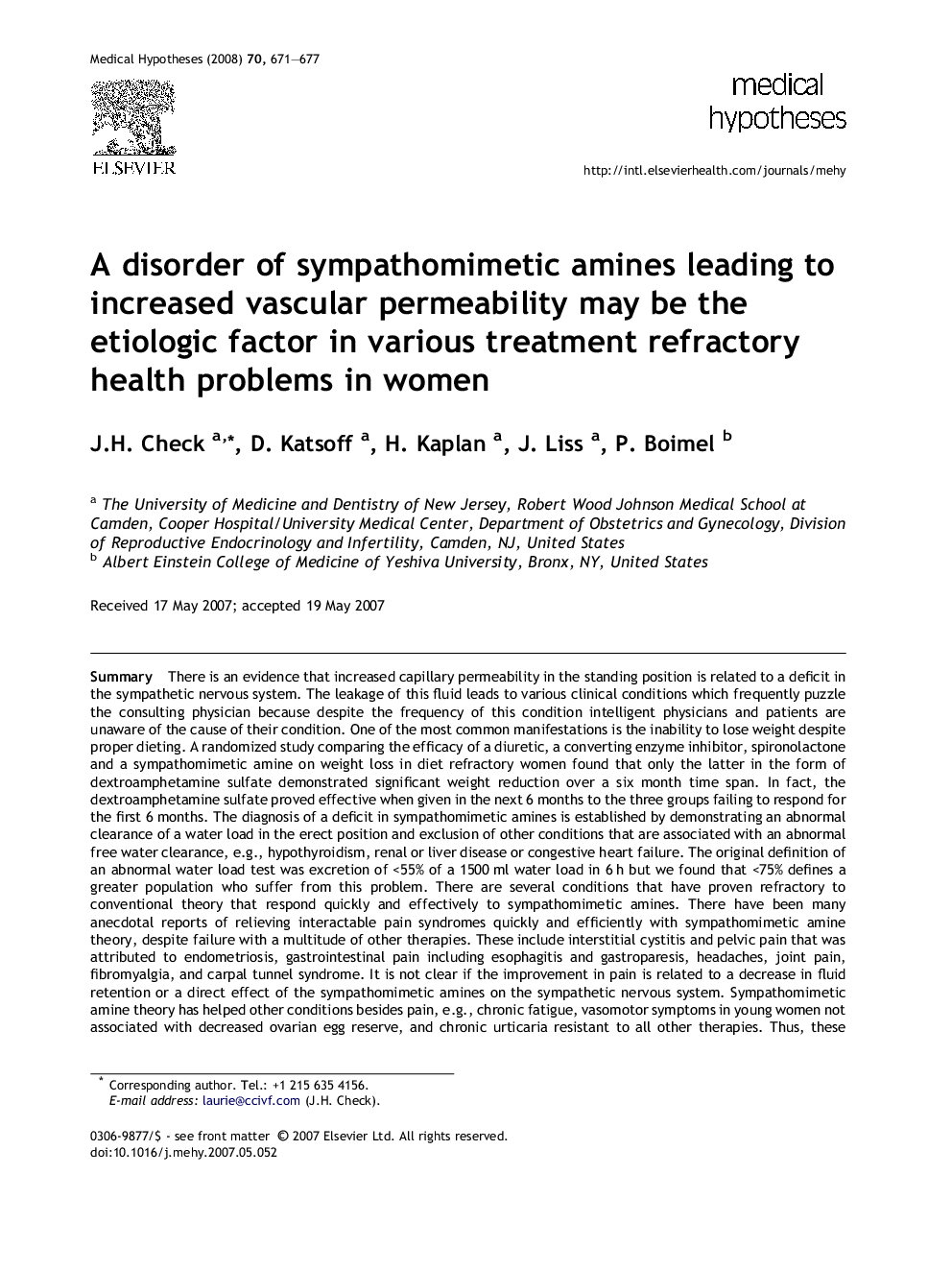| Article ID | Journal | Published Year | Pages | File Type |
|---|---|---|---|---|
| 2491085 | Medical Hypotheses | 2008 | 7 Pages |
SummaryThere is an evidence that increased capillary permeability in the standing position is related to a deficit in the sympathetic nervous system. The leakage of this fluid leads to various clinical conditions which frequently puzzle the consulting physician because despite the frequency of this condition intelligent physicians and patients are unaware of the cause of their condition. One of the most common manifestations is the inability to lose weight despite proper dieting. A randomized study comparing the efficacy of a diuretic, a converting enzyme inhibitor, spironolactone and a sympathomimetic amine on weight loss in diet refractory women found that only the latter in the form of dextroamphetamine sulfate demonstrated significant weight reduction over a six month time span. In fact, the dextroamphetamine sulfate proved effective when given in the next 6 months to the three groups failing to respond for the first 6 months. The diagnosis of a deficit in sympathomimetic amines is established by demonstrating an abnormal clearance of a water load in the erect position and exclusion of other conditions that are associated with an abnormal free water clearance, e.g., hypothyroidism, renal or liver disease or congestive heart failure. The original definition of an abnormal water load test was excretion of <55% of a 1500 ml water load in 6 h but we found that <75% defines a greater population who suffer from this problem. There are several conditions that have proven refractory to conventional theory that respond quickly and effectively to sympathomimetic amines. There have been many anecdotal reports of relieving interactable pain syndromes quickly and efficiently with sympathomimetic amine theory, despite failure with a multitude of other therapies. These include interstitial cystitis and pelvic pain that was attributed to endometriosis, gastrointestinal pain including esophagitis and gastroparesis, headaches, joint pain, fibromyalgia, and carpal tunnel syndrome. It is not clear if the improvement in pain is related to a decrease in fluid retention or a direct effect of the sympathomimetic amines on the sympathetic nervous system. Sympathomimetic amine theory has helped other conditions besides pain, e.g., chronic fatigue, vasomotor symptoms in young women not associated with decreased ovarian egg reserve, and chronic urticaria resistant to all other therapies. Thus, these studies strongly suggest that physicians be aware of this condition involving a deficit in the sympathetic nervous system when faced with various enigmatic complaints especially if standard therapy has not proven effective.
